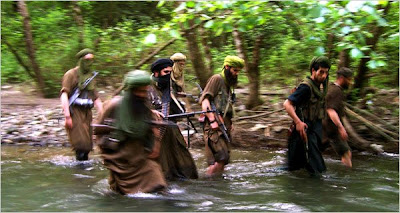| The following is modified from commentary prompted after reading Penguin Prose. This is the weekly news letter of the pre-K class at Beauvoir National Cathedral Elementary School, attended by our grandson. |

I noticed in the Penguin Prose of February 4, 2008 that the Penguins will “talk about the concept of 0 (zero)." Very interesting!
When we teach counting to kids we go: ‘one,’ ‘two,’ ‘three,’ etc. We never go: ‘zero,’ 1, 2, 3.
It’s amazing that the concept of zero wasn't even introduced into Western mathematics until the Renaissance by the Arabs who probably got it from the Indians where it showed up no earlier than about 600 AD. The Indians called it sunya meaning "empty or "blank", related to the Buddhist concept of sunyata meaning "emptiness" or "void."
It is certainly believable that zero was late to enter Western thought, since in early Europe they were still using Roman numerals. It is very difficult to do math with Roman numerals, which does not even have provision for zero. (Try multiplying X times V in Roman numerals.)
There are some who believe that zero is not a number at all but a symbol for a place holder. For example, in the sequence, ..7, 8, 9, 10..., the zero after the one in the number ten simply signifies the start of a new sequence of units. Obviously, however, zero is enormously important in modern mathematics and science; how else could we describe Avogadro's number: 6.023 x 1023 ? The concept of zero was described by a historian*: "In the history of culture, the discovery of zero will always stand out as one of the greatest single achievements of the human race." Maybe an exaggeration, but as a scientist and one who regularly does household accounts, it is hard to imagine how we could live without the mighty zero.
It will be interesting to see how the little Penguins will be introduced to the concept of zero.
* Dantzig, Tobias, Numbers – The Language of Science, 1930, p. 35.
When we teach counting to kids we go: ‘one,’ ‘two,’ ‘three,’ etc. We never go: ‘zero,’ 1, 2, 3.
It’s amazing that the concept of zero wasn't even introduced into Western mathematics until the Renaissance by the Arabs who probably got it from the Indians where it showed up no earlier than about 600 AD. The Indians called it sunya meaning "empty or "blank", related to the Buddhist concept of sunyata meaning "emptiness" or "void."
It is certainly believable that zero was late to enter Western thought, since in early Europe they were still using Roman numerals. It is very difficult to do math with Roman numerals, which does not even have provision for zero. (Try multiplying X times V in Roman numerals.)
There are some who believe that zero is not a number at all but a symbol for a place holder. For example, in the sequence, ..7, 8, 9, 10..., the zero after the one in the number ten simply signifies the start of a new sequence of units. Obviously, however, zero is enormously important in modern mathematics and science; how else could we describe Avogadro's number: 6.023 x 1023 ? The concept of zero was described by a historian*: "In the history of culture, the discovery of zero will always stand out as one of the greatest single achievements of the human race." Maybe an exaggeration, but as a scientist and one who regularly does household accounts, it is hard to imagine how we could live without the mighty zero.
It will be interesting to see how the little Penguins will be introduced to the concept of zero.
* Dantzig, Tobias, Numbers – The Language of Science, 1930, p. 35.
